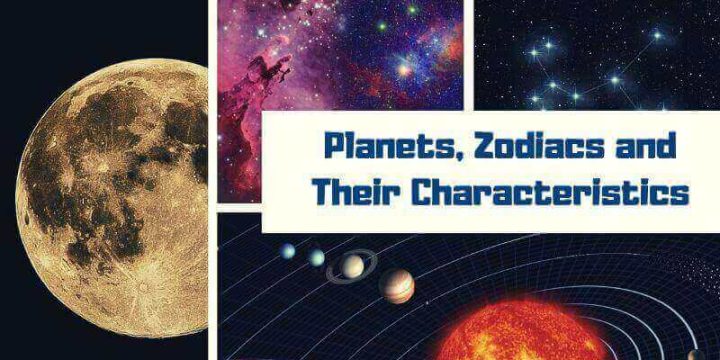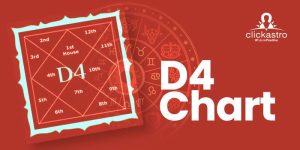Contents[hide]
Planets and Zodiac
The Stars and Planets influence your life right from the time of your birth! The way they influence your life is based on their relative positions in the sky at the time of your birth. Every life on the Earth has an astrological design which can be studied to know about its character and destiny. Every zodiac has a ruling planet. A detailed examination of 12 houses sheds light on all spheres of your life. Thus, you can know about your education, career, marriage, family life, health etc Get FREE Horoscope and know about your destinyAstrological Terminology
Trines: The 5th, 9th and the 1st houses from the Lagna. Upachaya: The 3rd, 6th, 10th and 11th houses from a sign. Vakra (Retrograde): Planets that do not move in the regular order of signs. Rahu and Ketu always move in the reverse direction andtherefore always in Vakra. Planets Mercury, Venus, Mars, Jupiter and Saturn appear to reverse their motion, observed from the earth, during certain periods. They get back to the regular motion after a while. These planets when they apparently move in the reverse direction are considered to be in Vakra or Retrograde. Vedha: A Vedha planet is one that prevents or cuts off the benefic or malefic effects manifested by another planet. Vernal and Autumnal Equinox: The Vernal Equinox and Autumnal Equinox, occurring about March 21 and September 21, are the only two days in a year when day and night are of equal length. The Autumnal signs are Libra, Scorpio and Sagittarius and the Vernal signs are Aries, Taurus and Gemini. At each equinox, day and night are of equal length. To set out for any venture at the time of the equinox is believed to be inauspicious with disastrous results. Vargothama: Planet in the same house, both in Rasi and Navamsa. A Lagna if it is of the same sign both in Rasi and Navamsa is called Vargothama Lagna.
 Recal: The horoscope at birth from which the past, present and future are determined. It is otherwise called Lagna.
Quadrants: The 4th, 7th and 10th and 1st houses from any sign or Lagna.
Paksha: The fortnight during which, as the Moon revolves in its orbit, the bright part increases till the full Moon when the whole of the illuminated disk is towards us, is called Sukla Paksha. The next fortnight during which its bright side slowly diminishes and it comes into conjunction with the Sun forms Krishna Paksha.
Sukla means white and Sukla Paksha is the period when the Moon is waxing.
Krishna means dark and the Krishna Paksha is the period when the Moon is waning.
Tithi: A tithi is a day of the Moon. Tithis are 15 in number reckoned from New Moon day to next Full Moon or from the Full Moon to the New Moon. The 1st day i.e., the day following the New Moon or the Full Moon is called Prathama, 2nd Dhwitiya, 3rd Tritiya, 4th Chaturthi, 5th Panchami, 6th Shashti, 7th Saptami, 8th Ashtami, 9th Navami, 10th Dasami, 11 th Ekadasi, 12th Dwadasi, 13th Trayodasi, 14th Chaturdasi.
Tarabla: If we have to assess whether a day’s star is good or bad to us, we have to count from our star to the day’s star and divide it by 9. The balance of the number indicates the result. They are called as follows :
Recal: The horoscope at birth from which the past, present and future are determined. It is otherwise called Lagna.
Quadrants: The 4th, 7th and 10th and 1st houses from any sign or Lagna.
Paksha: The fortnight during which, as the Moon revolves in its orbit, the bright part increases till the full Moon when the whole of the illuminated disk is towards us, is called Sukla Paksha. The next fortnight during which its bright side slowly diminishes and it comes into conjunction with the Sun forms Krishna Paksha.
Sukla means white and Sukla Paksha is the period when the Moon is waxing.
Krishna means dark and the Krishna Paksha is the period when the Moon is waning.
Tithi: A tithi is a day of the Moon. Tithis are 15 in number reckoned from New Moon day to next Full Moon or from the Full Moon to the New Moon. The 1st day i.e., the day following the New Moon or the Full Moon is called Prathama, 2nd Dhwitiya, 3rd Tritiya, 4th Chaturthi, 5th Panchami, 6th Shashti, 7th Saptami, 8th Ashtami, 9th Navami, 10th Dasami, 11 th Ekadasi, 12th Dwadasi, 13th Trayodasi, 14th Chaturdasi.
Tarabla: If we have to assess whether a day’s star is good or bad to us, we have to count from our star to the day’s star and divide it by 9. The balance of the number indicates the result. They are called as follows :
| No. | Result |
| 1 | Janma |
| 2 | Sampath |
| 3 | Vipath |
| 4 | Kshema |
| 5 | Prathyak |
| 6 | Sadhak |
| 7 | Vadha |
| 8 | Mithra |
| 9 | Param Mitra |
| Good Stars are 2,4,6 and 9 | |
Deities symbolising the planets and herbs
The following table shows the degree of the main exaltation of the different planets.| Planets | Diety | Herbs |
| Sun | Siva | Arka Plant |
| Moon | Gowri | Palasa Plant |
| Mars | Kartika | Khadhra |
| Mercury | Vishnu | Apamarga |
| Jupiter | Dakshina Murthy | The fig tree (peepal tree) |
| Venus | Lakshmi | Audumbara |
| Saturn | Sastra | Vanhi (Shami or Banyan tree) |
| Rahu | Ganesha | Darbha (Kusha) |
Horoscopic Directions
- 1st House stands for East
- 7th House stands for West
- 4th House stands for South
- 10th House stands for North
Malefics, Benefics, Death inflictors and Raja Yoga giver for 12 Rasis and Lagna
| Lagna | Malefics | Benefics | Death Planets | Rajayoga Karakas |
| Mesha | Sat, Mar, Ven | Sun, Jup | Mer, Ven | Sat |
| Vrishaba | Jup, Ven, Moon | Sat, Sun | Jup, Ven Moon | Sat |
| Mithuna | Mar, Jup | Ven | Mar, Sun, Moon | Ven |
| Karkataka | Ven, Sat, Mer | Jup, Mar | Ven, Sat, Mer | Mar |
| Leo | Sun, Mer, Ven | Jup, Mer, Ven | Sat, Ven | Mar |
| Kanya | Jup, Moon | Ven, Mer, Mar | Jup, Moon, Sun | Ven, Mer |
| Thula | Sun, Jup, Mar | Sat, Moo, Mer | Jup, Sun | Sat |
| Vrischika | Mer, Ven, Sat | Jup, Sun, Moon | Mer, Ven, Sat | Sun, Moon |
| Dhanus | Sat, Ven | Mar, Ven | Ven, Moon, Mer | Sun, Mer |
| Makara | Mar, Jup, Moon | Vem, Mer | Mar, Jup | Ven |
| Kumbha | Mar, Jup, Moon | Ven | Mar, Jup, Moon | Mar, Ven |
| Meena | Ven, Sat, Sun, Mer | Moon, Mar | Sat, Ven, Sun, Mer | Sat, Jup |

Strength of planets during day and night
Moon, Saturn, Mars are strong during night times.Sun, Jupiter, Venus are strong during day times.
Mercury is strong during the day as well as night times.
Important Sanskrit works to be consulted for mastery over the subject
Important Sanskrit Authors. Vasista, Narada, Sakthi, Parashara, Vyasa, Vishnugupta, Vavana, Devala, Maya, Jaimini, Manitha, Satyaacharya, Jivasharma, Maudaya.| No. | Work | No. | Work |
| 1 | Kalamrita | 16 | Daivagna Vilana |
| 2 | Sarvatha Chintamani | 17 | Horapradpika |
| 3 | Manasagari | 18 | Suryasiddanta |
| 4 | Mahurtha Darpana | 19 | Navanitarnava |
| 5 | Gopalarathnakara | 20 | Parashara Hora |
| 6 | Saravali | 21 | Daivagna Bhushana |
| 7 | Nakshathra | 22 | Jathaka Thathwa |
| 8 | Jinendra Mala | 23 | Jathaka Parijatha |
| 9 | Ududasha Pradipika | 24 | Jathaka Adashamarga |
| 10 | Jathakalankara | 25 | Brihat Jathaka |
| 11 | Yogavali | 26 | Horashara |
| 12 | Jathakakalanithi | 27 | Krishna Misriya |
| 13 | Karale | 28 | Phaladeepika |
| 14 | Jathakachandrika | 29 | Uttarakalamrita |
| 15 | Daivagni Bharana |








